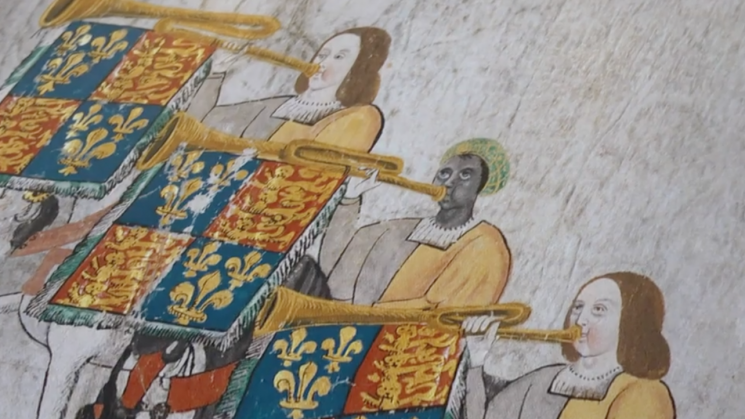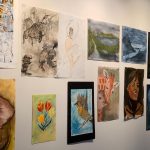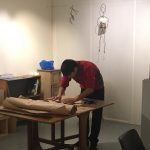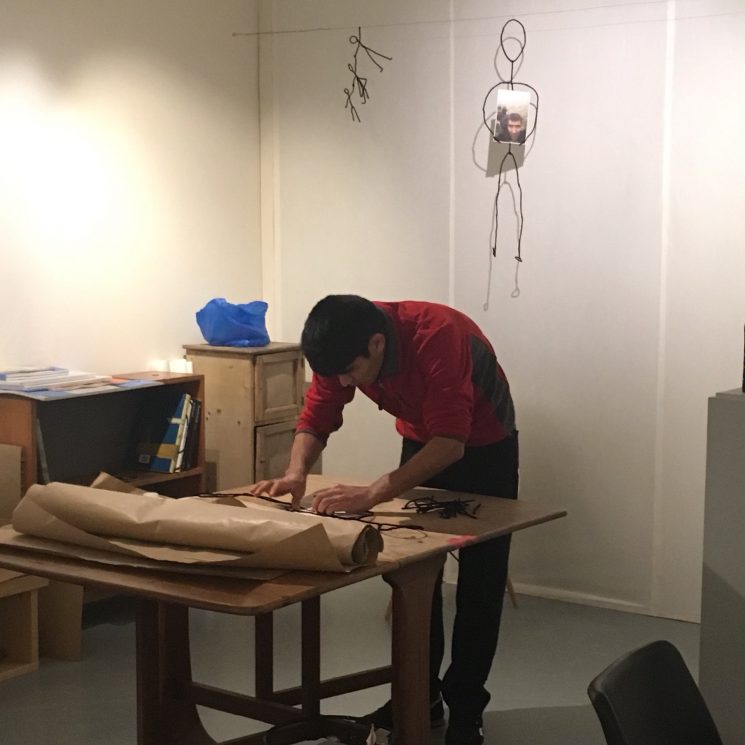29 January, 2019


Historian and Migration Museum Trustee David Olusoga explores the lives of some of the hundreds of black migrants who were in England during the Tudor period of the 1500s. Olusoga visits The National Archives in Kew, where he meets Dr. Miranda Kaufmann who has researched the lives of more than 200 of these people. Most were living ordinary lives, working in domestic service or the cloth trade, but there were exceptions. They discuss John Blanke, a trumpeter in the court of Henry VIII, who was so well established that he actually submitted a request for a pay rise, and a diver, Jacques Francis, who gave evidence in a court case. Dr. Kaufmann concludes that some black people in England were accorded greater privileges than many white English people at the time.
Click here to watch (external link to BBC website)
24 January, 2019
TRT World, Turkey’s international English-language news network, featured our Room to Breathe exhibition and theatre company 27 degrees’ immersive performance of
Touching Home on its arts and culture programme Showcase.


The New Art Studio is taking up residence in the art studio in our Room to Breathe exhibition from 17 January until 24 February 2019.
The New Art Studio is a London-based therapeutic art studio for asylum seekers and refugees, providing a safe space for some of the most dispossessed members of our society.
The studio not only offers a place of solace, friendship and camaraderie, it is a place where all emotion is accepted and held through the power of collective art making. The studio works to give relief from the effects of profound trauma. Making art can be a profound way of connecting with one’s experiences, and making visible what can be difficult to put into words.
During its residency, the studio will be exhibiting artworks produced by its members, which will form a part of our Room to Breathe exhibition. Tania Kaczynski and Jon Martyn, art psychotherapists and founders of the New Art Studio, will also be running a series of weekly drop-in public workshops on Saturday afternoons, providing you with the opportunity to develop your understanding of the experiences of refugees and asylum seekers through art making and discussion.
Participation in the workshops is free, although donations are welcomed. No registration is required – just turn up on the day. Click here for more information on the workshops
Residency details:
Dates: 17 January–24 February 2019
Address: Migration Museum at The Workshop, 26 Lambeth High Street, London SE1 7AG
Opening hours: Thursday 12pm–8pm, Friday–Sunday 12pm–6pm
Workshop timetable:
Saturday 19 January 2019, 2pm–5pm
Saturday 26 January 2019, 2pm–5pm
Saturday 2 February 2019, 2pm–5pm
Saturday 9 February 2019, 2pm–5pm
Saturday 16 February 2019, 2pm–5pm
Saturday 23 February 2019, 2pm–5pm
The New Art Studio is our latest artist in residence as part of our Room to Breathe exhibition.
Find out more about New Art Studio (links to external website)
About the art studio in Room to Breathe
The art studio inside our Room to Breathe exhibition is a space curated by visual art and educator Dima Karout to explore the role of art and creativity in helping people settle into new lives in Britain, and to offer educational art experiences for visitors. Each month, the studio will host a different migrant artist to share their work and process.
View the full schedule of artists in residence and find out more about Room to Breathe
13 January, 2019


Habib Sadat was the second artist to take up residence in the art studio of our Room to Breathe exhibition, from 6 December 2018 until 13 January 2019.
As well as working from and exhibiting a selection of his works in the art studio, Habib also led an Afghan cooking class, one of a series of cookery classes run by Migrateful that we are hosting held in the kitchen area of Room to Breathe.
Here’s the text from the welcome panel that Habib wrote for visitors to his art studio, exploring what art means to him and the role that art plays in his life:
Ever since I was a child in Afghanistan, I have wanted to paint and make things. As I grew older, everyone told me ‘Don’t do that; you’re not a child anymore.’
When I arrived in the UK on 1 June 2016, I was sent to a detention centre. I was always thinking about what was going to happen to me and how long I was going to be there. It was a challenge for my mental health. At times I felt hopeless, and I decided to do something to fill my time in a positive way. I found out there was an art room and, the moment I saw it, I felt better. I started to make things – rugs from old fabrics, clay temples and paintings. I’d spend all day there. It took my mind off everything that was happening with the Home Office.
Once I left the detention centre, I connected with friends that I had met in the Calais camp and on my journey. I got involved in art projects and I joined a group of refugees performing a play called Borderline about the Calais refugee camp. With old friends and new friends, I felt I was part of a family. It got better and better.
There have been difficulties and darkness in my life. I’ve lost everything. But something has always happened that has given me the power to step forward and keep going. As long as I can keep active, make art and do what I can to help other people, I can keep going.
About the art studio in Room to Breathe
The art studio inside our Room to Breathe exhibition is a space curated by visual art and educator Dima Karout to explore the role of art and creativity in helping people settle into new lives in Britain, and to offer educational art experiences for visitors. Each month, the studio will host a different migrant artist to share their work and process.
View the full schedule of artists in residence and find out more about Room to Breathe







